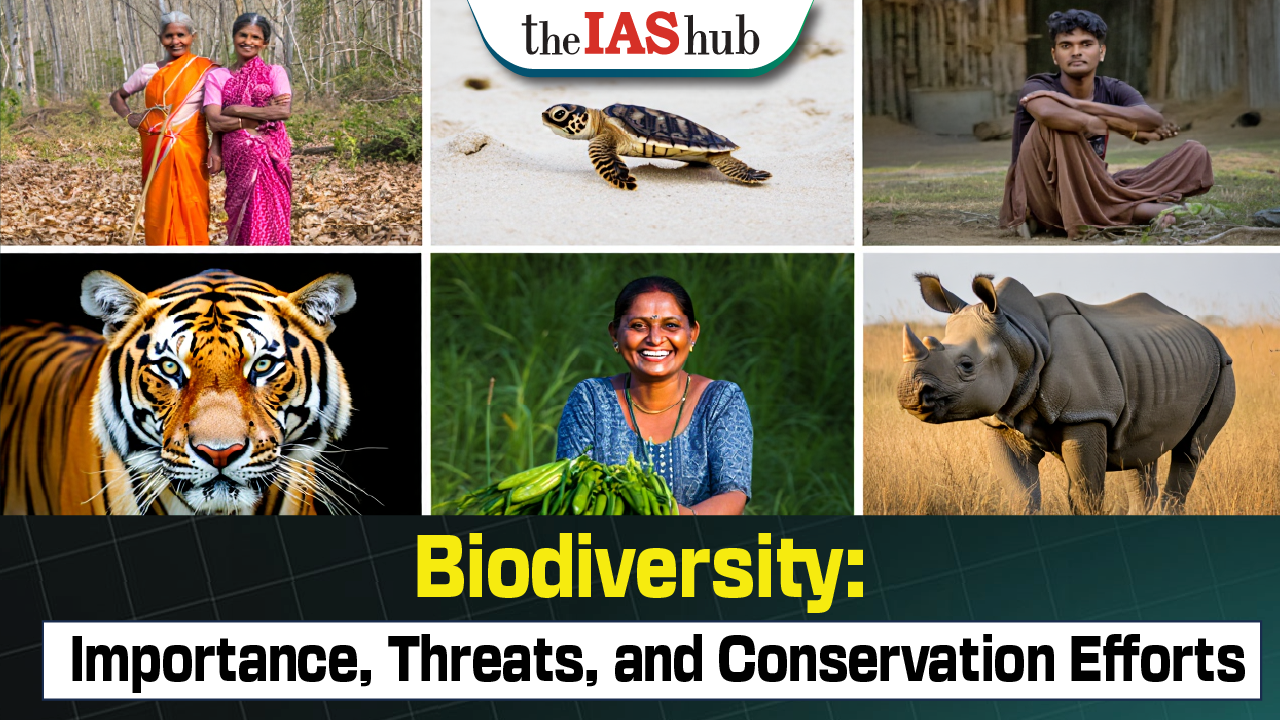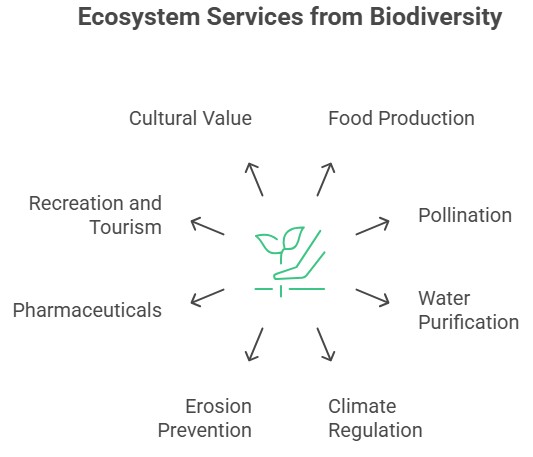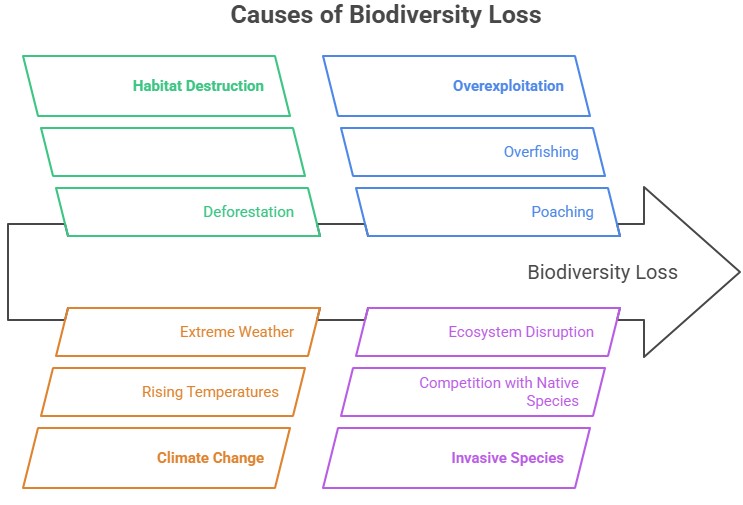The United Nations Earth Summit 1992 defined Biodiversity as ‘the variability among living organisms from all sources, including terrestrial, marine and other aquatic ecosystems and the ecological complexes of which they are a part; this includes diversity within species, between species, and of ecosystems.


Biodiversity encompasses the variety of life on Earth at genetic, species, and ecosystem levels, providing essential services that sustain life. Protecting this rich natural heritage is critical for environmental health, economic prosperity, and future generations.
"Preserving biodiversity is our duty towards the planet and future generations. It is our collective responsibility to protect and conserve the rich flora and fauna that make our planet unique. Let us strive to create a harmonious balance between development and nature, ensuring that biodiversity thrives and sustains for the well-being of all." - Prime Minister Narendra Modi
|
Keywords from Aaj Ka Quality Enrichment (http://bit.ly/aaj-ka-enrichment)
|
“The interest in conservation is not a sentimental one, but the rediscovery of a truth well known to our ancient sages. The Indian tradition teaches us that all forms of life — human, animal and plant — are so closely interlinked that disturbance in one gives rise to imbalance in the other.” – Indira Gandhi (1980)
The United Nations Earth Summit 1992 defined Biodiversity as ‘the variability among living organisms from all sources, including terrestrial, marine and other aquatic ecosystems and the ecological complexes of which they are a part; this includes diversity within species, between species, and of ecosystems.
Biodiversity is considered to exist at three levels: genetics, species, and ecosystems.

|
Type of Biodiversity |
Definition |
Causes |
Examples |
|
Genetic Biodiversity |
Variation of genes within a species |
Mutation, gene flow, sexual reproduction, natural selection |
Variations in human blood types, dog breeds |
|
Species Biodiversity |
Variety of species in a region or habitat |
Speciation, migration, adaptation |
Tropical rainforests, coral reefs |
|
Ecosystem Biodiversity |
Diversity of habitats, ecological processes, and communities |
Geographic features, climate, disturbance patterns |
Desert, forest, ocean, tundra ecosystems |


|
‘Cool-spots’ (the world’s last refuges where high numbers of threatened species still persist). |
|
Important facts:
|
Sixth Mass Extinction

A mass extinction is a short period of geological time in which a high percentage of biodiversity, or distinct species—bacteria, fungi, plants, mammals, birds, reptiles, amphibians, fish, invertebrates—dies out.

|
Biodiversity conservation is essential for maintaining the health of ecosystems, supporting human well-being, mitigating climate change, preserving cultural heritage, conserving genetic resources, and fulfilling our ethical responsibilities.


Refine your answer writing skills and elevate your UPSC preparation with personalized support and expert feedback.
Fill out the form to get started with the program or any other enquiries !








Are you dreaming of becoming an IAS officer? Then, IAShub can be your best guide. It is one of the Best IAS Coaching in Delhi. Many students who want to clear the UPSC exam join IAShub for learning. The institute gives both online and offline classes. Their teachers are experienced and helpful. They easily explain every topic. Students also get notes, tests, and tips to do well in the exam.
IAShub is in Delhi and is trusted by many UPSC students. It offers coaching for every part of the UPSC exam – Prelims, Mains, and Interview. The classes are simple and easy to understand. The teachers are experts and guide students in the right way. IAShub is also known for its helpful notes, test series, and answer-writing practice. IAShub is the best coaching in Delhi and also gives UPSC Online Classes. This helps students from any place in India to learn. The online classes are live and also recorded. So, students can watch them anytime. These classes cover the full UPSC syllabus.
Here are some important services provided by IAShub:
The UPSC Civil Services Exam has three parts:
This exam is tough, but with the right guidance, it becomes easy to manage. Students must study smart and stay regular.
IAShub supports students from the beginning to the end. It gives the right books, tests, and notes. The classes are easy to follow, and the teachers are always ready to help. Students get personal doubt sessions too. The test series and answer checking help students learn where they need to do better. Also, free study materials save time and money.
IAShub also guides students during the final stage – the interview. Experts take mock interviews and give useful tips. This full support makes IAShub one of the best IAS coaching in Delhi.